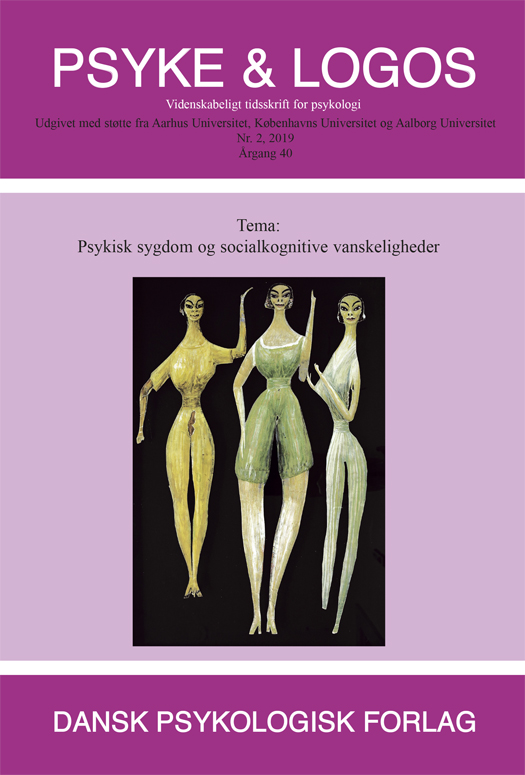Theory of Mind-subgrupper ved patienter med skizofreni
DOI:
https://doi.org/10.7146/pl.v40i2.117804Nøgleord:
Theory of Mind, Skizofreni, Autismespektrumforstyrrelser, Interpersonelle vanskelighederResumé
Artiklen gennemgår den aktuelle viden om Theory of Mind (ToM)-vanskeligheder ved skizofreni med særligt fokus på subgrupper inden for denne patientkategori. Kun ganske få studier har direkte sammenlignet ToM-færdigheder hos mennesker med autismespektrumforstyrrelser og patienter med skizofreni. Flere metaanalyser har forgæves forsøgt at differentiere mellem de to patientgrupper, idet begge grupper af patienter har interpersonelle vanskeligheder. Det tyder på, at man i langt de fleste studier har sammenlignet en subgruppe af højt fungerende personer med autismespektrumforstyrrelser med en subgruppe af patienter med skizofreni med et mere kronisk sygdomsforløb. Inden for gruppen af patienter med skizofreni er der stor forskel på omfanget af ToM-vanskeligheder. Den aktuelle viden på området tyder på, at visse aspekter af negative symptomer er forbundet med mere udtalte ToM-vanskeligheder. Derimod er der ingen klar sammenhæng mellem ToM-vanskeligheder og psykotiske symptomer. Der er påvist mindre udtalte ToM-vanskeligheder hos patienter med hurtig remission. Men selv hos patienter, som tilsyneladende ikke havde ToM-vanskeligheder, har man påvist ændret hjerneaktivitet i det neurale mentaliseringsnetværk, hvilket tyder på, at patienterne er på mentalt overarbejde, når de interagerer socialt. Den aktuelle forskning indikerer behovet for, at patienter med skizofreni bør udredes for socialkognitive vanskeligheder, herunder ToM, med henblik på at kunne tilbyde den mest optimale behandlingsindsats.
Downloads
Publiceret
Citation/Eksport
Nummer
Sektion
Licens
Ophavsret er tidsskriftets og forfatternes. Det er gældende praksis, at artikler publiceret i Psyke & Logos, som efterfølgende oversættes til andet sprog, af forfatteren frit kan publiceres i internationale tidsskrifter, dog således at det ved reference fremgår, at den oversatte artikel har et forlæg i en dansksproget version i Psyke & Logos. Artikler kan frit deles og linkes til på forsknings- og undervisningsnetværk (så som Blackboard). Link foretrækkes, fordi det giver oplysning om brug af tidsskriftets artikler.




